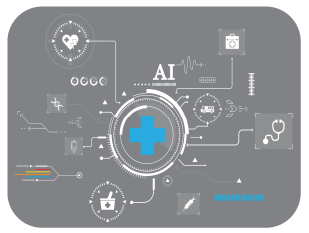In the fast-paced world of data analytics, automation is no longer a luxury—it’s a necessity. Data analysts spend significant time cleaning, transforming, and extracting insights from data, but what if AI could handle these tasks efficiently? Enter ChatGPT: an AI-powered tool designed to automate tedious data-related tasks and optimize workflow efficiency.
Why Automate Data Analysis?
Data analysts deal with vast amounts of data that require cleaning, structuring, and analysis. Manual execution of these tasks is time-consuming and prone to errors. Automation not only saves time but also ensures accuracy and consistency in data analysis, allowing professionals to focus on more strategic and high-value work.
How ChatGPT Enhances Data Analysis
ChatGPT simplifies and accelerates data-related tasks by offering:
1. Automating SQL Query Generation
Writing SQL queries from scratch can be time-intensive. ChatGPT can generate optimized SQL queries based on natural language inputs, enabling analysts to quickly retrieve, filter, and manipulate data from databases with minimal effort.
2. Generating Python Scripts for Data Processing
From data cleaning to advanced analytics, Python is a go-to tool for data analysts. ChatGPT can generate Python scripts to automate tasks such as:
– Data cleaning and preprocessing
– Data transformation and merging
– Data visualization with Matplotlib or Seaborn
This eliminates the need to write extensive code manually, making the process faster and more efficient.
3. Analyzing and Summarizing Reports
ChatGPT can help extract key insights from lengthy reports and datasets. Whether it’s summarizing complex financial statements or highlighting trends in large datasets, AI-driven automation can provide quick and accurate interpretations, saving analysts hours of manual work.
4. Performing Predictive Analysis
Predictive analytics is essential for making data-driven decisions. ChatGPT can assist in identifying trends, suggesting statistical models, and even generating Python code for predictive modeling using machine learning libraries such as Scikit-Learn or TensorFlow.
Real-World Applications
Organizations are already leveraging ChatGPT in various industries for:
– Finance: Automating financial forecasting and risk analysis.
– Marketing: Identifying customer trends and improving campaign targeting.
– Healthcare: Analyzing patient records and predicting disease outbreaks.
– Retail: Optimizing supply chain management and sales forecasting.
How to Get Started
1. Identify Repetitive Tasks – List out the manual, time-consuming tasks in your workflow.
2. Integrate ChatGPT – Use ChatGPT to generate SQL queries, Python scripts, or summarize reports.
3. Validate & Optimize – Ensure the AI-generated content aligns with your business needs and fine-tune where necessary.
4. Scale & Automate – Implement AI-driven automation into your daily operations for maximum efficiency.
Recommended Resources
To further enhance your understanding of AI-driven automation in data analysis, explore the following resources:
– Learn about how to integrate ChatGPT into data workflows. (https://beta.openai.com/docs/) –
– Explore datasets and AI-driven analytics projects. (https://www.kaggle.com/) –
– Improve SQL skills for automated querying. (https://www.coursera.org/learn/sql-for-data-science) –
– A deep dive into Python for data analysis. (https://jakevdp.github.io/PythonDataScienceHandbook/) –
– Learn how to use machine learning for predictive analytics. (https://scikit-learn.org/stable/) –
AI-driven automation is revolutionizing the field of data analysis. By leveraging ChatGPT, analysts can eliminate mundane tasks, enhance efficiency, and focus on driving strategic insights. The future of data analytics is automated, and ChatGPT is at the forefront of this transformation.
Ready to supercharge your data analysis? Start leveraging AI-powered automation today and take your analytics game to the next level!




